Spring Landscape (Spring in Marin County)
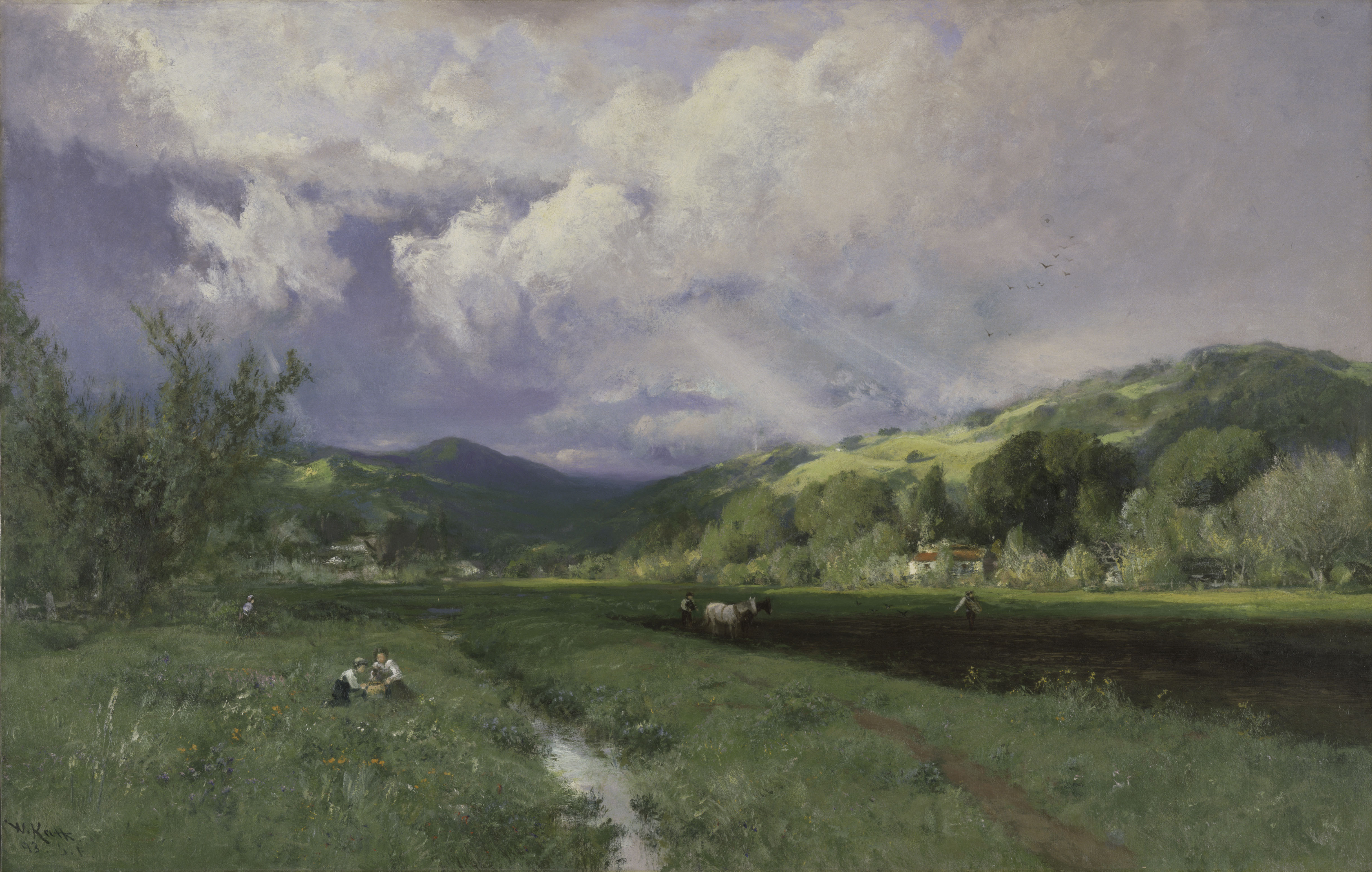
Does this painting describe a moment in time, or is it timeless?

Does this painting describe a moment in time, or is it timeless?
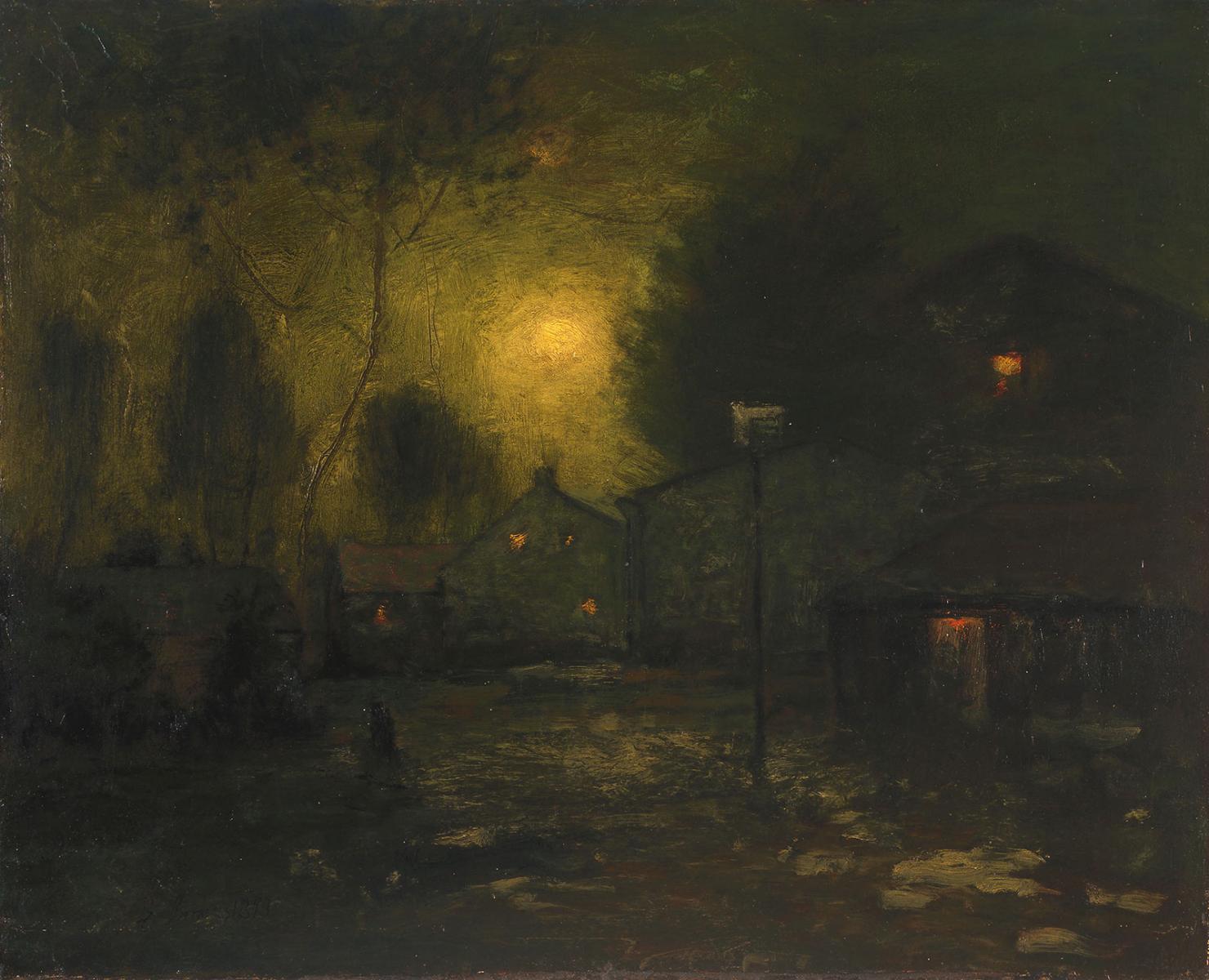
What emotional quality does the light in this painting suggest?
This painting attempts to convey the impression made upon Inness by the partially obscured glow of moonlight on trees and houses. The artist once explained, “The purpose of the painter is simply to reproduce in other minds the impression which a scene has made upon him. . . . [an artwork’s] aim is not to instruct, not to edify, but to awaken an emotion.”

What forms of power shape this landscape?
This view of San Quentin State Prison shows California’s oldest and most notorious prison veiled behind a foggy mist. Birk’s landscape documents the transformation of California from a mythical Eden into the home of one of the nation’s largest incarcerated populations. According to Birk, the works in his Prisonation series are “based on the California landscape paintings of the 1880s, the image of California, and the romance of the West and the reality of what the West has become.”
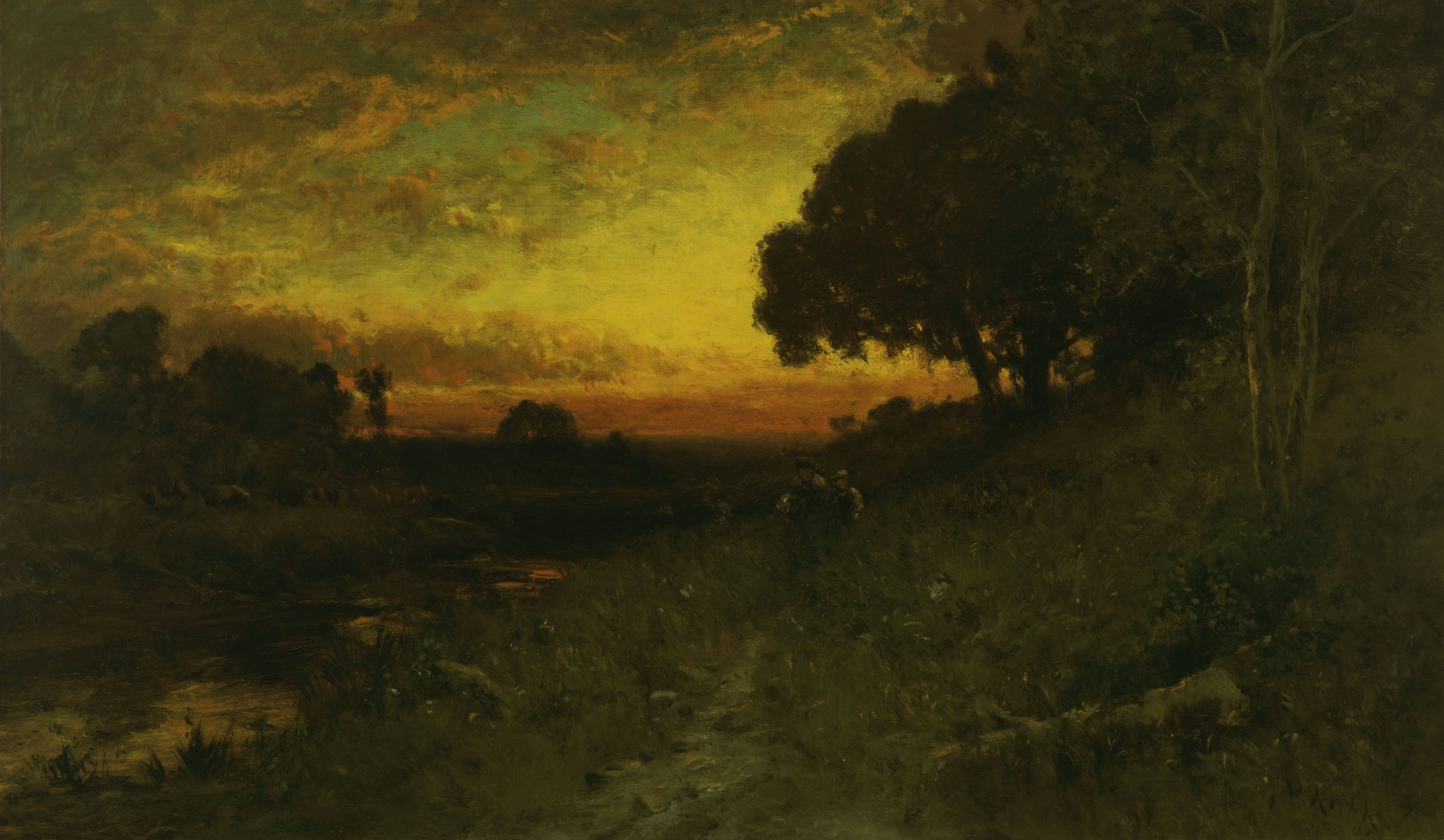
What do you experience walking at night in nature?
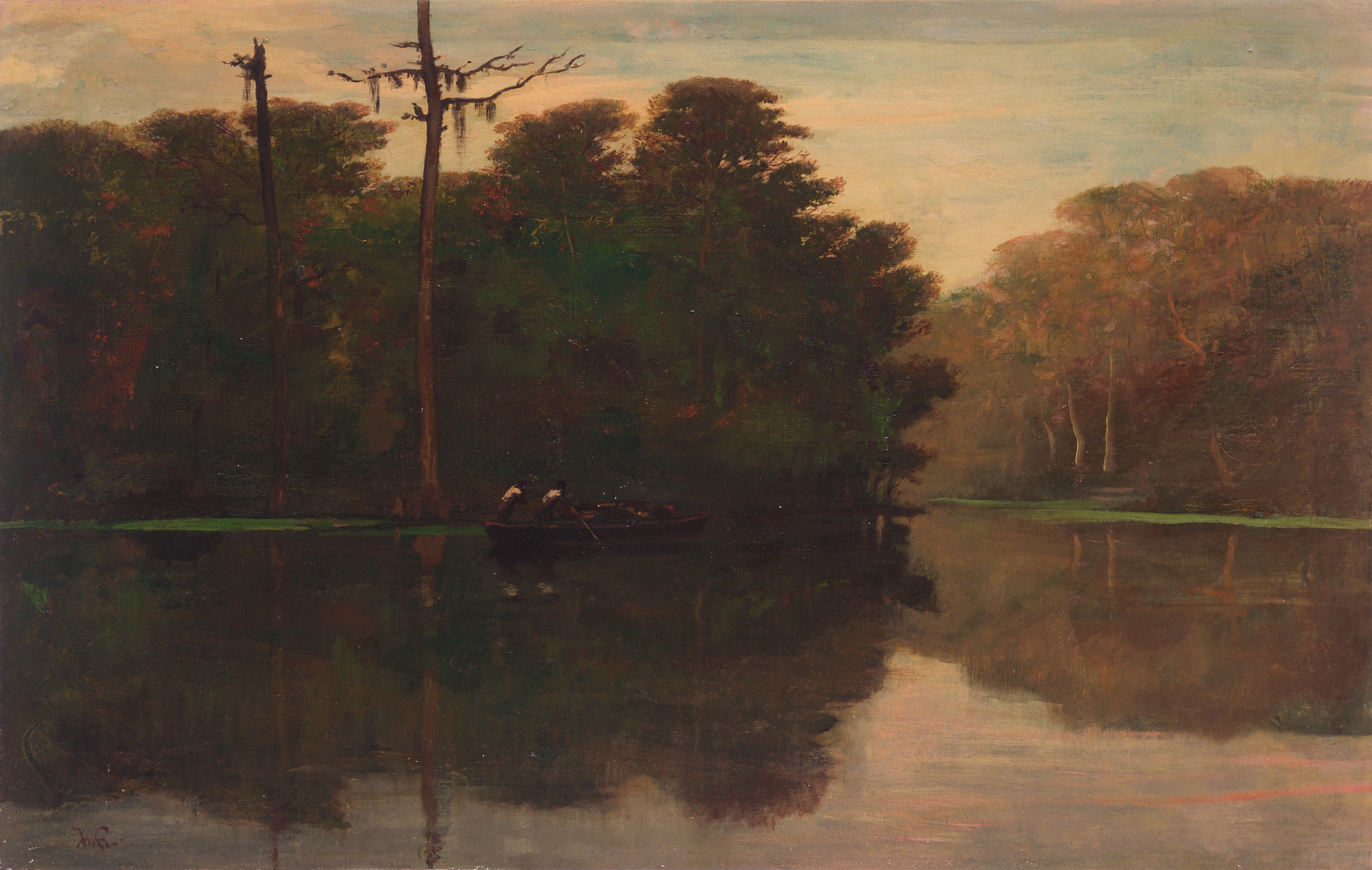
Does the movement of the boat interrupt the scene’s stillness or become a part of it?
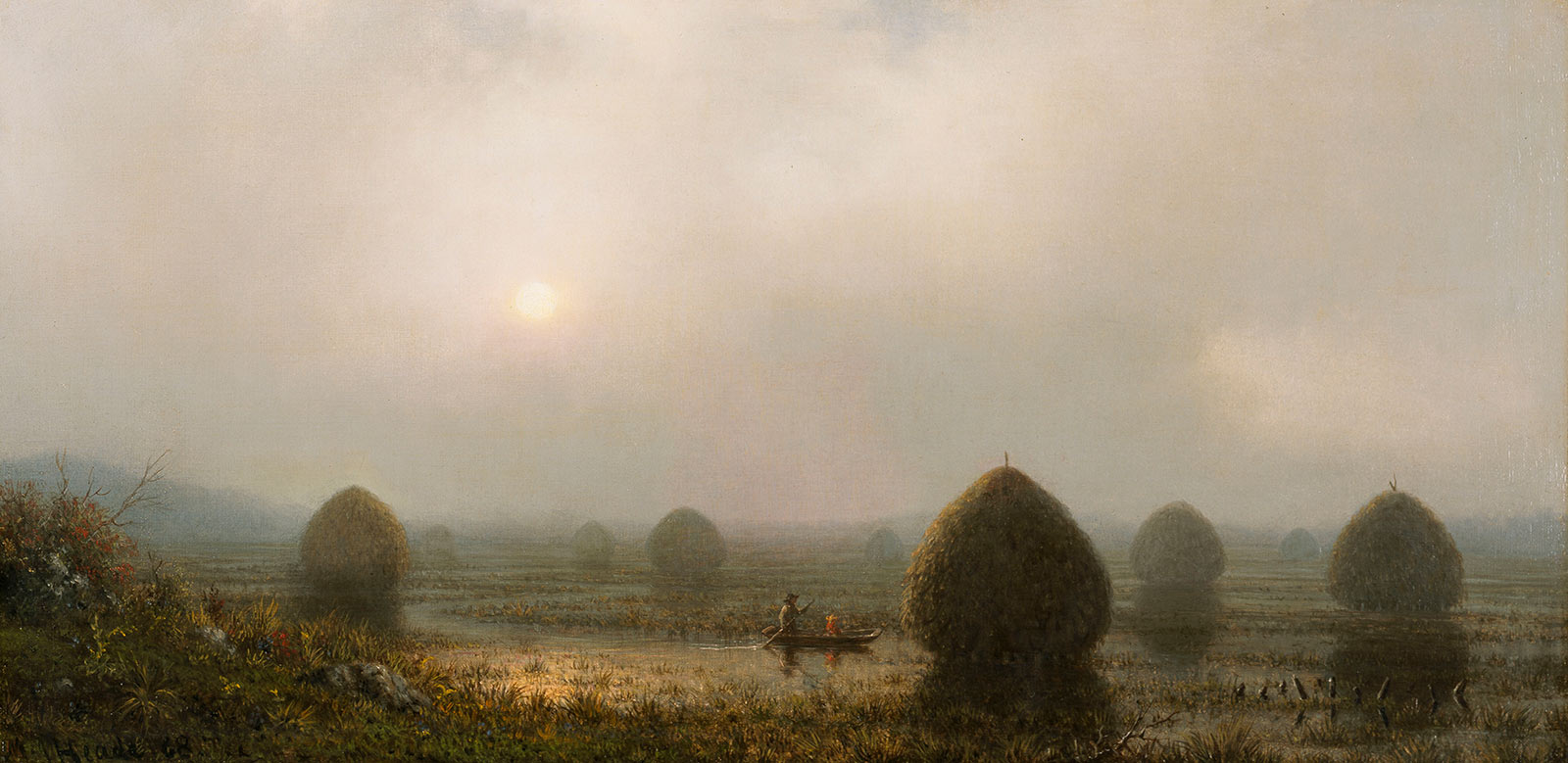
What do you do to protect the environment?
Heade painted 120 views of salt marshes, natural farmlands where laborers harvested black marsh grasses and gathered them into haystacks to dry. The artist first went into the marshes to hunt and fish, developing a deep appreciation for the productive relationship between humans and the land. The two figures in the canoe—likely a father and son—may have symbolized the future generations that would benefit from protecting and maintaining such natural resources.

What democratic ideals was America founded upon?
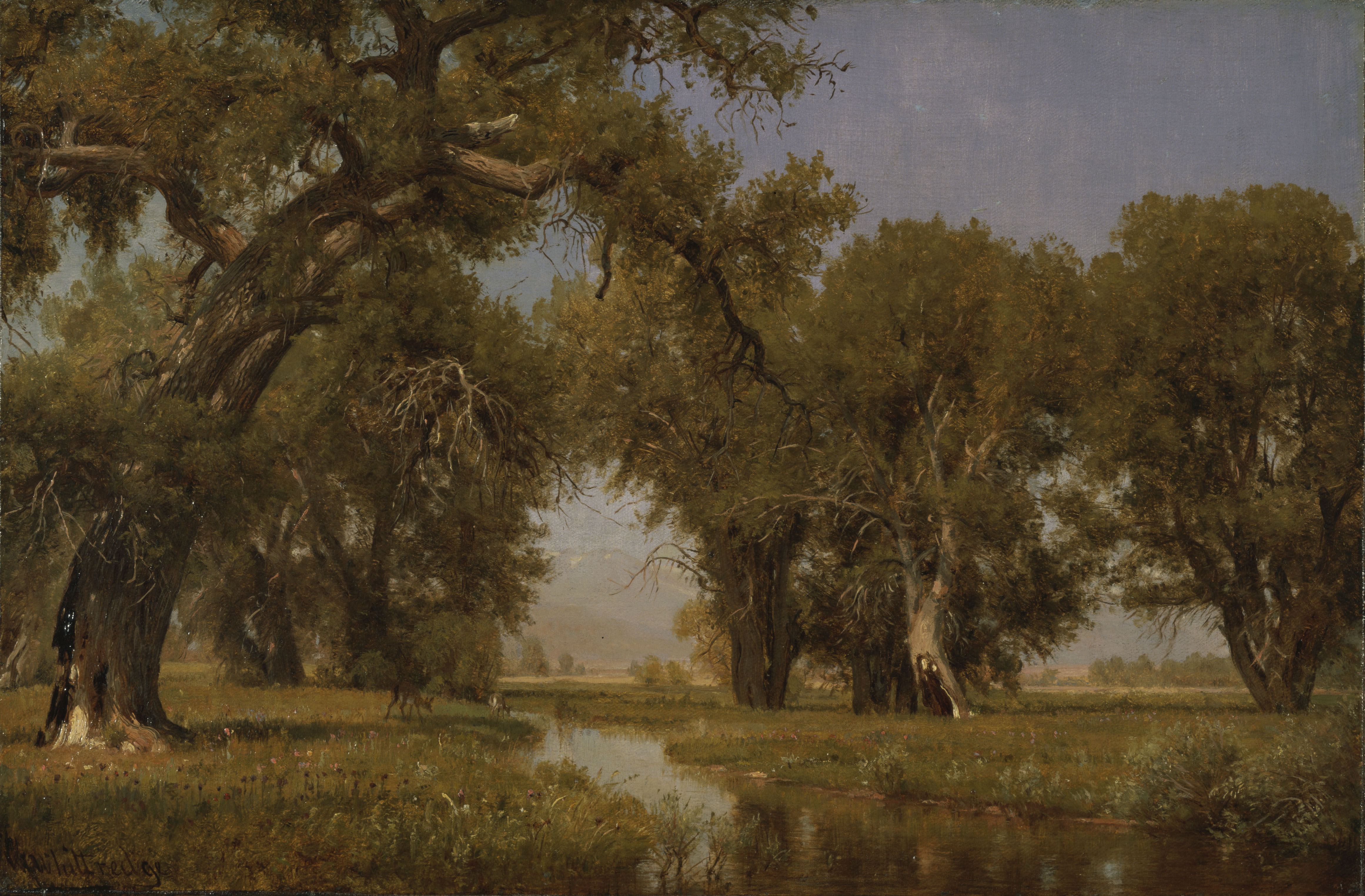
What might have been left out of this painting?
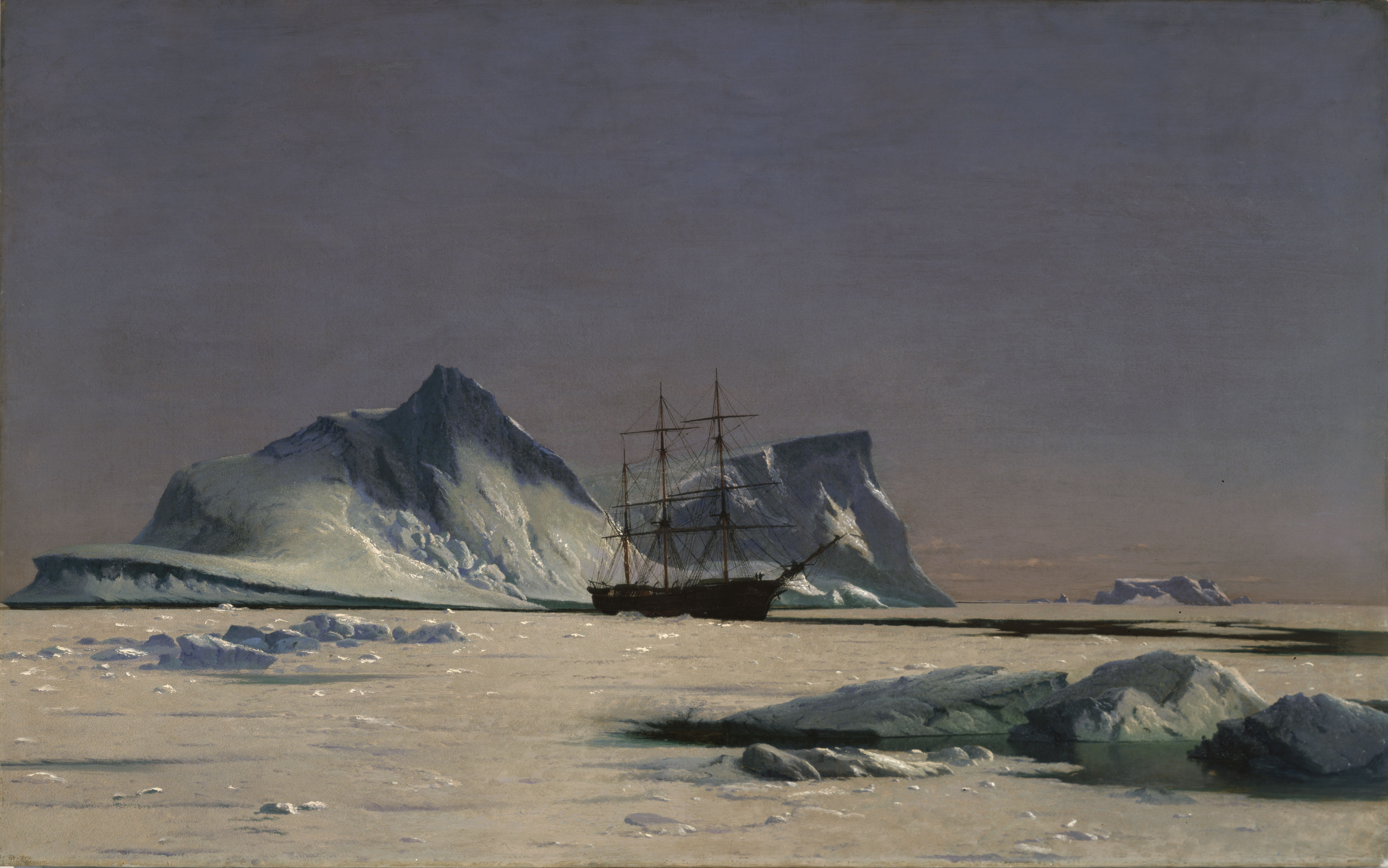
Have you ever been on a great adventure?
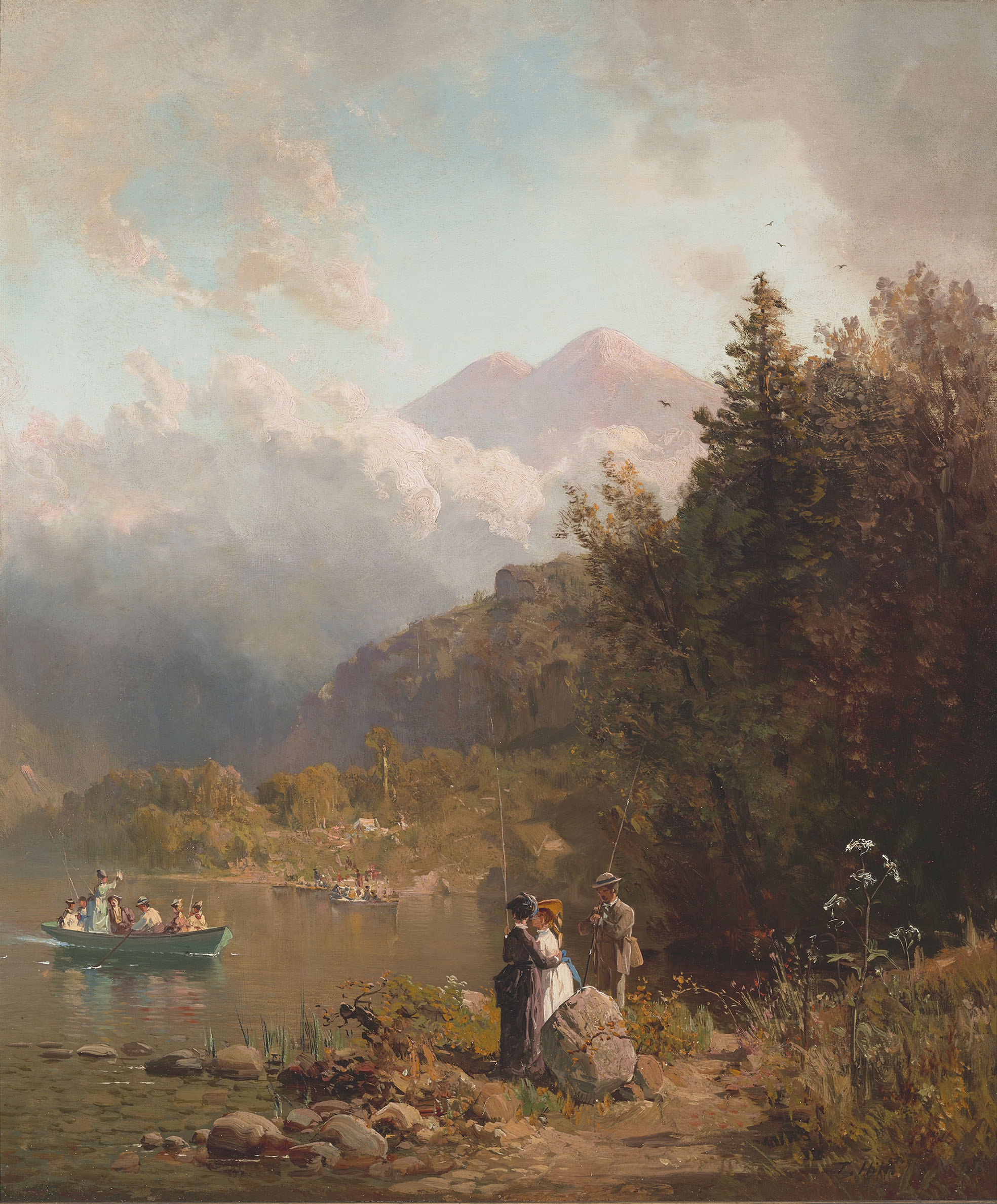
How do outdoor activities make you feel?
This painting shows how a reverence for nature helped cultivate rural, recreational tourism. The popularity of fishing was greatly enhanced by the publication of the first American edition (1847) of Isaak Walton’s legendary fishing guide The Compleat Angler: The Contemplative Man’s Recreation (1653). While some Americans fished for sustenance and others “angled” for pleasure, most believed that fishing enhanced the participant’s physical and mental health.